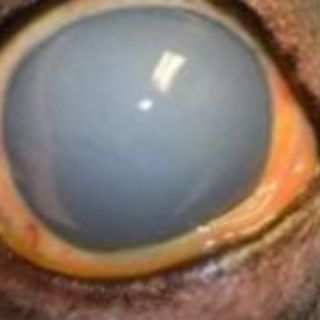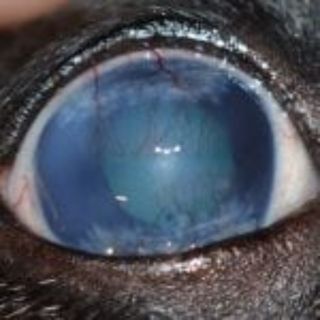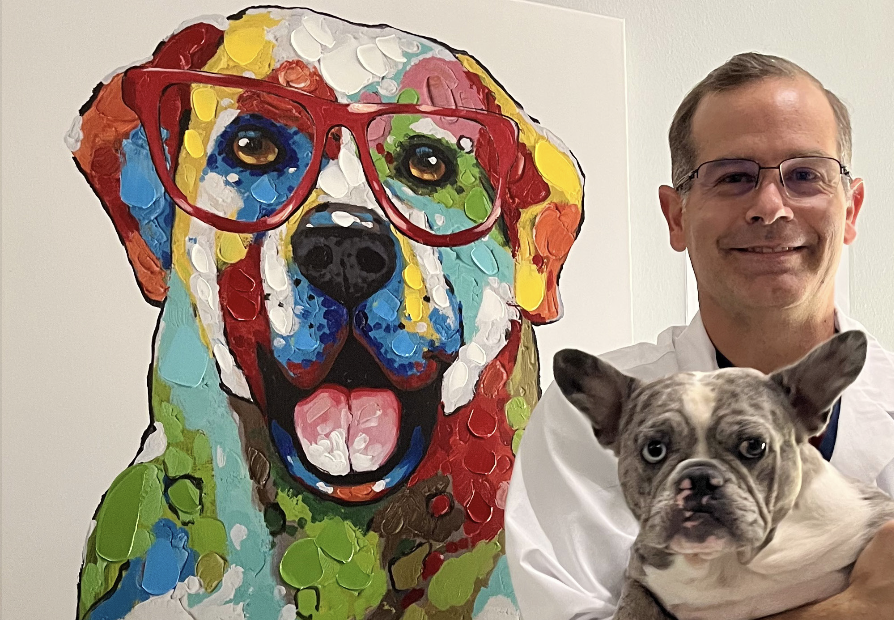Pet Corneal Endothelial Dystrophy in Katy, TX
Corneal endothelial dystrophy (CED) is a progressive eye condition that can significantly impact your pet’s vision and comfort. At Animal Eye Medical & Surgical Specialists in Katy, TX, we offer expert diagnosis and treatment options to manage this condition and help maintain your pet’s quality of life.
Understanding Pet Corneal Endothelial Dystrophy
Corneal endothelial dystrophy is characterized by the buildup of fluid, or edema, within the cornea. The cornea is the transparent front part of the eye, and its clarity is essential for proper vision. The endothelium, a thin layer of cells on the inner surface of the cornea, plays a crucial role in maintaining this clarity by regulating fluid levels. When these cells fail to function properly, fluid accumulates, causing the cornea to become cloudy.
Symptoms and Progression of Corneal Endothelial Dystrophy
The onset of CED is usually gradual, with symptoms worsening over time. Early detection and treatment are vital to slowing the progression and preserving your pet’s vision.
Common symptoms of corneal endothelial dystrophy include:
- Cloudy or bluish appearance of the cornea, usually starting at the edges and spreading across the eye
- Vision impairment as the condition progresses
- Discomfort or pain in the later stages due to corneal ulcers or inflammation
- Increased tearing or discharge from the affected eye
If you see any of these signs, call us immediately at 832-437-0119 for a thorough evaluation and prompt care. Early treatment is crucial for protecting your pet’s vision.


Causes of Corneal Endothelial Dystrophy in Pets
Corneal endothelial dystrophy can affect any breed, but certain breeds are particularly prone to developing this condition.
Prone Breeds:
- Chihuahuas
- Boston Terriers
- Dachshunds
CED is often age-related, typically appearing in older pets. However, it can also result from underlying inflammation or injury to the cornea.
Treatment for Pet Corneal Endothelial Dystrophy in Katy, TX
At Animal Eye Medical & Surgical Specialists, we offer advanced treatment options to manage corneal endothelial dystrophy. Early intervention is key to achieving the best outcomes and minimizing discomfort for your pet.
Treatment options include:
In some cases, medications may be used to manage symptoms and reduce inflammation. However, surgery is often recommended as the primary treatment to address the underlying cause of the condition.
Regular check-ups are essential to monitor the progression of CED and adjust treatment as needed. Early detection of any changes can make a significant difference in managing the condition effectively.
One of the most effective treatments for CED involves a surgical procedure to graft the scleral conjunctiva over the affected areas of the cornea. This technique helps reduce corneal edema and slow the progression of the disease. Surgery is most successful when performed in the early stages before significant vision loss occurs.
Why Choose Animal Eye Medical & Surgical Specialists?
- Specialized Expertise: Our team is highly trained in veterinary ophthalmology, ensuring your pet receives expert care for corneal endothelial dystrophy.
- Advanced Diagnostic Tools: We use advanced equipment to accurately diagnose and monitor your pet’s eye condition.
- Comprehensive Treatment Options: From medical management to surgical grafting, we offer a range of treatments tailored to your pet’s specific needs.
- Personalized Care: We understand that every pet is unique and customize our approach to provide the best possible outcomes.
- Compassionate Team: Our dedicated staff is committed to delivering gentle and compassionate care throughout your pet’s treatment journey.
If you suspect your pet may be showing signs of corneal endothelial dystrophy, don’t hesitate to reach out. Early diagnosis and treatment are crucial to preserving your pet’s vision and comfort. Contact Animal Eye Medical & Surgical Specialists in Katy, TX, to schedule a consultation or to learn more about our services. Our dedicated team is here to provide compassionate and comprehensive care for your pet’s eye health.

